Pick And Mix- Taxonomy Fragments to Inspire Tagging Structure
March 2022
·
2 min read

Pick and mix
There’s no "one taxonomy to rule them all," but there are certainly taxonomy-fragments that are worth borrowing from or being inspired by. These might draw from the worlds of service design or management consulting, academic work in anthropology, sociology, or psychology, or align with the specifics of your business or industry.
Regardless, the tags and tag groups that follow should be thought of as inspiration, as starting points, to be borrowed in fragments, and to be adapted to your particular needs.

Examples
Below are a handful of examples of tags or taxonomies that might form the whole or a portion of your tagging structure for a project…
Customer journey stages
- Awareness
- Consideration
- Purchase
- Retention
- Advocacy
Ecosystem participants
Generic
- Direct user
- Economic buyer
- Decisionmaker
- Support network
- Information source
- Subject matter expert
Domain specific
- Patient
- Patient’s friends and family
- Doctor (PCP)
- Doctor (specialist)
- Nurse
- Pharmacist
- Health insurance (phone agent)
- Clinic front desk/receptionist
- Pharma rep
Space
Geography
- West Coast (SF Office)
- East Coast (NYC Office)
- Asia (KTM Office)
- Europe (BER pop-up)
- Latin America
- Africa
- Oceania
Interior/spaces
- Entryway
- Living Room
- Bedroom
- Home Office
- Kitchen
- Garden
Time
Simple
- Before
- During
- After
Business process
- Application
- Estimate/quote
- Negotiation
- Order
- Processing
- Notification
- Agreement
- Shipment
- Delivery
- Billing
- Updating records
Emotions
- Sadness
- Happiness
- Fear
- Anger
- Surprise
- Disgust
Sentiment
- Positive
- Neutral
- Negative
Types of comment
- Bug report
- Usability issue
- Mental-model confusion
- Minor feature request/suggestion
- Major feature request/suggestion
- Competition/comparison
Based on an existing framework or theory
e.g. from psychology, sociology, anthropology
Spradley (1997)
- Evidence of social conflict
- Cultural contradictions
- Informal methods of social control
- Things that people do in managing impersonal social relationships,
- Methods by which people acquire and maintain achieved and ascribed status
- Information about how people solve problems.
Fogg Behavior Model
- Motivation
- Ability
- Prompt
Transtheoretical Model (Stages of Change) - Prochaska and DiClemente, 1977
- Precontemplation
- Contemplation
- Preparation
- Action
- Maintenance
- Termination
Action-centric
- Follow-up
- Share with other department
- Task
Output-centric
Thematic
- Insight A
- Insight B
- Insight C
Sequential
- Introduction
- Chapter 1
- Chapter 2
- Chapter 3
- Chapter 4
- Conclusion
Product-specific
Your company’s product portfolio
- Product A
- Product B
- Product C
Features/components of a given product
- Component 1
- Component 2
- Component 3
- Component 4
This is not a menu from which you should expect to pick a couple of options and be satisfied. But hopefully it provides some fragments you can put to use, and some approaches you can adapt to your own project work.
For further tips and tricks on how to set up your taxonomy in Reduct, take a look at A Close Read of a Tag Group for some ideas.

